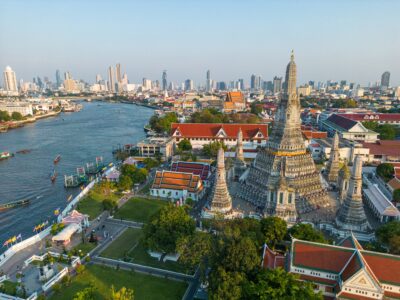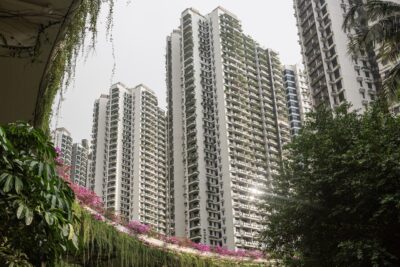The value of technology in the real estate industry, from construction to user stage
Thought leaders discuss how technology can be beneficial if used to its maximum potential

The real estate industry has been talking about the value of technology for several years now, eventually leading us to familiarise with renowned tech hyphenations, such as proptech and contech. However, with the abundance of possibilities that can be done with technology, experts believe that the industry is still not harnessing it to its maximum potential.
At the PropertyGuru Asia Real Estate Summit held last November 2019, Joelle Chen, the programme director at Beca Singapore, moderated a panel titled Tech Disruptors: solutions that are transforming the way we build to the way we live. In this session, thought leaders from across the region shared how to utilise technology to benefit not only businesses and end-users, but also the environment as a whole.
Tech (and other pillars) can pave the way for sustainable design
According to Prof. Jason Pomeroy, the founding principal of Pomeroy Studio and Pomeroy Academy, the three main pillars of sustainability, which are social, economic and environmental, are no longer enough in this day and age. At the summit, he shared that “culture, space and technology are equally important and should be considered as three additional pillars.”
Culture: Rapid globalisation in major urban areas means the gathering of diverse cultures. As such, cultural preservation is key.
Space: In this highly-urbanised world, the future is dim unless we do something about it. By 2050, 75 percent of the global population will be living in city centres. So herein lies the question from Jason, “How do we preserve social space for our interaction so that we don’t retreat to our mobile phones and just live virtual lives?”
Technology: He believes that technology should be used wisely and sparingly. “The technology that we use should be good for six-year-olds all the way to the 70-year-olds.”
Apart from the additional pillars, Jason has been advocating for the floating city technology, a sustainable design that would address overpopulation and rising sea levels in urban cities.
“The 35 megacities of the world are all in floodplain locations and these 35 megacities with over 10 million people are some of the real powerhouses in terms of the global economy. Rather than trying to design in aesthetic fashion, we should think about more dynamic development whereby, you can start thinking about floating communities and cities,” said Jason.
Most of these major cities have underutilised dockyards, which can serve as the perfect location to set up floating cities. In Ijburg, Amsterdam, for instance, they transformed docks into a floating residential area, which is “an alternative form of urbanisation that is affordable, energy-efficient and resilient to pressuring issues, like rising sea levels.”
More: Ideas to transform our cities and transcend into a new era
Tech enables social cohesion and improves the quality of life
Meanwhile, Prof. Nadia Magnenat Thalmann, the founder and director of MIRALab at the University of Geneva, has developed social robots beneficial for both commercial and personal use. One of these so-called Nadine social robots has already been operating for several months as a customer agent in AIA Singapore.
Nadine has been helping the employees there during peak hours, handling very basic tasks and answering very basic questions of clients, thereby allowing human customer agents to focus on more complicated responsibilities.
When it comes to personal use, Nadine can serve as an ideal companion to the elderly. She can improve their quality of living since her features are quite life-like and she can understand emotions, gestures and situations.
With Nadine social robots, “you always have somebody looking, remembering, communicating and managing everything for 24 hours. They can also bring food over time,” said Nadia.
Tech ensures the efficient use of resources
Stefan Rafael, the co-founder and head of technology at One To One Displays, said that through technology, they were able to improve the planning stage and help developers reduce their carbon footprint in the process.
Before construction, blueprints are first interpreted and that interpretation dictates how the project will eventually look like. But with the hardware and software that his firm uses, parties involved in the project can simply stand in the space and picture the output right then and there, eliminating the need to build display showrooms, which in turn, minimises wasted materials.
“We use simple technology of projection and very complicated software to take those plans and make them one-to-one scale. And then, stakeholders can stand and have a normal discussion using their own two feet and hands and perspective to walk around that land to ensure that it’s the intention and everyone’s on the right page,” explained Stefan.
More: The world of virtual reality technology captivates the real estate sector
The real estate industry may have already accepted the value of technology in optimising their operations and in making their consumers’ life more comfortable. However, we rarely see technology being used to its full potential in this industry. Hopefully with these innovative ideas and creations shared by our thought leaders, we will soon see solutions that address the bigger picture.
This article originally appeared in asiarealestatesummit.com
Recommended
Meet the vagabond architect behind India’s housing scene
Vinu Daniel is helping to shake up India’s home building setting
Where Asian real estate stands in a fragmented, warmer world
Asia’s real estate industry faces many and varied challenges as external factors continue to bite
6 sights to see in Singapore’s Marine Parade
Handily located Marine Parade has emerged as a vibrant investment choice in the Lion City
There’s a township dedicated to health and wellness in Malaysia
Property seekers have their health needs catered for at KL Wellness City








